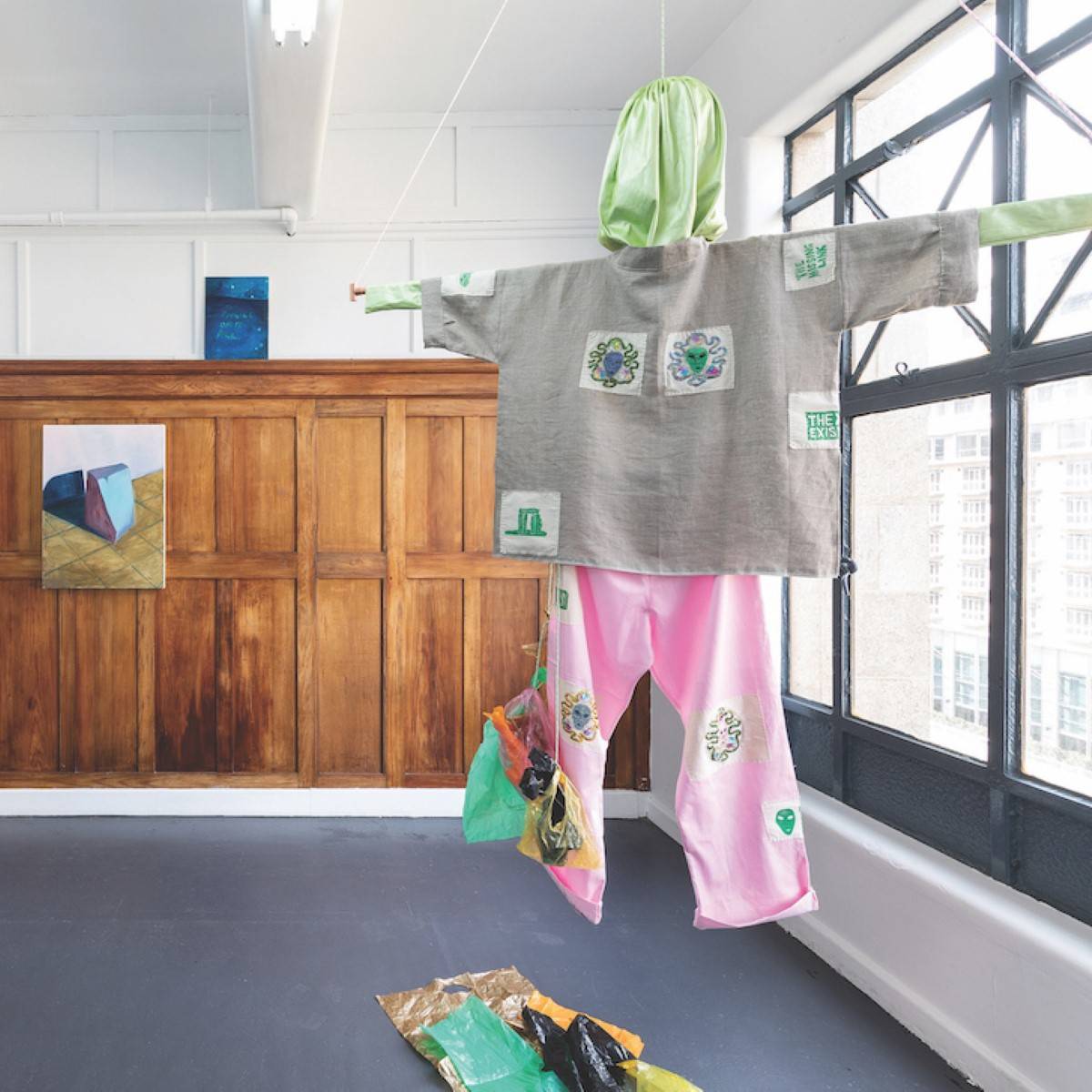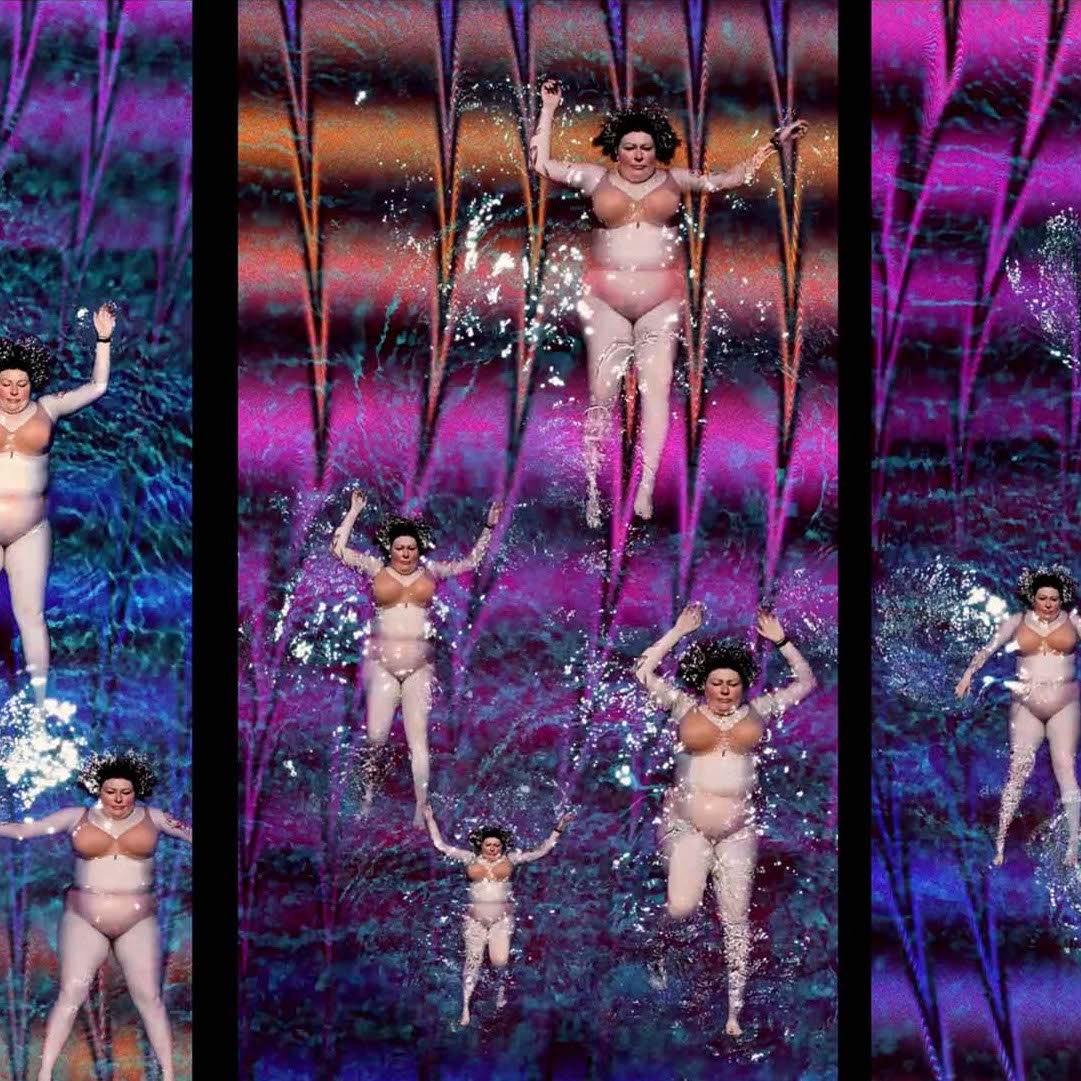Cool Hunter Predictions: Nabilah Nordin
The artists to watch in the year ahead.
Words: Mariam Arcilla
A home studio near a scrap metal yard has proven fruitful for Melbourne-based Nabilah Nordin, whose self-described “impossible, impractical sculptures” are underscored by discarded and found objects (candelabras, CD racks, table parts). Anchored by an “intuitive, materially-guided process”, the Singaporean-born artist contorts items with cement, wood, foam, wire and paint, conjuring a tactile ecosystem of lopsided, hyperbolic forms and impasto-gooped palettes. Nordin’s space-engulfing works feel both familiar and topsy-turvy: imagine a human-sized mound of heatwave-melted candies or an abandoned playpen overrun by chromatic bacteria.
Indeed, curator Talia Smith, who selected Nordin’s clustery floor-work Anti-Poem for the 2020 Churchie National Emerging Art Prize exhibition at Brisbane’s IMA, called her creation “strangely delicious … you just want to get in there and bite it.” QAGOMA’s Curator of Asian Art, Tarun Nagesh, who judged the prize, anointed Nordin’s assemblage a Special Commendation.
Since completing her Bachelor of Fine Art at RMIT in 2013, Nordin has in the past few years forged a prolific exhibition presence. A regular in group shows (at Neon Parc, LON and The Commercial, to name a few), she has staged nine solos, including presentations at Cement Fondu and COMA, and noteworthy showcases at the Singapore Biennale (2019– 20) and South Korea’s Changwon Sculpture Biennale (2020). Throughout it all, Nordin has favoured a haptic, wondrous craftsmanship. “I want to maintain naivety in my work, so I’m constantly finding ways to unfamiliarise myself with learned processes,” says the artist, who, at just under five foot, relies on ladders and whole-body jumps to experiment, birds’s-eye-style, on some of her pretzeled, towering structures.
Nordin rarely exhibits small works, unless they’re congregated into “large support systems”, as exemplified in The Commercial’s Peace Altitude (2019) and the offbeat Sculpture House (2020), where she and her partner, artist Nick Modrzewski, converted the rooms in their Abbotsford home into what Nordin calls “a sculptural graveyard”. Her resourcefulness has the art world taking notes. Come March 2021, Nordin’s work features in the Yavuz Gallery Sydney’s group show Emerging Topographies.
Elevating her fixation with experiential sculpture, Nordin teamed up with curator Sophie Prince to host Please Do Not Eat the Sculptures, a series of interactive dinners intertwining food with art. Postponed due to covid-19, this project’s new poignancy as a 2020–21 post-lockdown salve for many Melburnians is indicative of Nordin’s ability to atomise her practice. She has an “intuitive yet astute handling of material and space”, Prince declares, and within her immersive practice is a “reflexive question-asking” that allows her to “rethink norms in a profound way”. As it turns out, Nordin’s impossible sculptures bear endless possibilities.
Image: Nabilah Nordin, Floral Arrangement, 2020. Wood, cement, gravel, liquid nails, foam, plaster, bisque fired earthenware clay, paint and spray paint, 48 x 30 x 23cm. Courtesy: the artist.
This article was originally published in Art Collector issue 95, JAN – MAR 2021.









